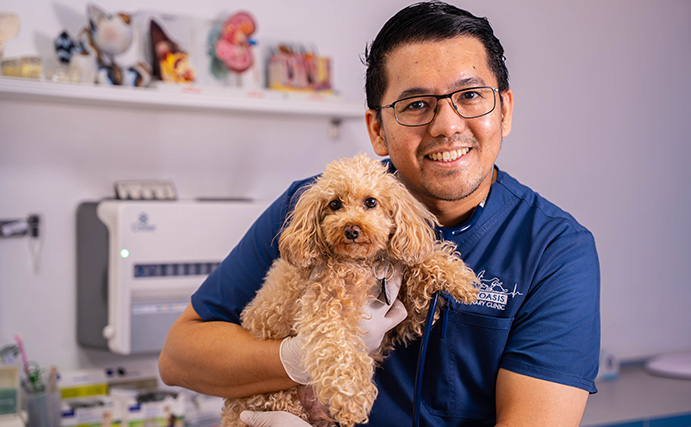At our contemporary veterinary clinic in Dubai, we offer cutting-edge digital x-ray facilities through which a variety of internal conditions can be properly diagnosed in pets. Weather your dog has incurred an injury, your cat has gastrointestinal issues, or your pet has symptoms which don’t make sense, x-rays can provide our veterinarians with a clear indication of what’s occurring inside — without resorting to intrusive procedures.
Our digital x-ray technology provides quick high-quality images with low levels of radiation exposure. This means we can take timely and informed medical action, from fracture detection through the detection of tumours or ingested objects. In contrast to older film-style systems, x-rays can be seen instantly and saved or sent electronically.
We know just how stressful medical imaging can be for pets and their owners alike. That’s why our veterinarians and staff are trained to treat your pet carefully and efficiently from beginning to end through the imaging experience, making every step a comfortable and secure one.
Why Are X-Rays Necessary in Veterinary Care?
One of the strongest and most useful diagnostic tools in animal medicine, veterinary x-rays provide a powerful tool for addressing a variety of conditions when symptoms are not clear or internal injuries or pathological changes are suspected. Often, x-rays are the initial step toward a positive diagnosis and treatment of serious conditions before they become a matter of life and death.
These are just a few of the medical conditions and issues x-rays assist us in assessing:
- They are necessary for the diagnosis of bone fracture and joint injuries when a fall or accident occurs.
- Degenerative joint disease and arthritis: Assists us in determining long-standing wear and tear in ageing pets so we can develop pain control regimens.
- Foreign body ingestion: X-rays identify ingested objects like bone, toys, or clothing, which may obstruct the intestine or harm the stomach.
- Chest and lung assessment: It detects conditions such as pneumonia, cardiac enlargement, or lung fluid build-up.
- Size and shape of the organs: To assess the liver, kidneys, spleen, bladder, and intestine for abnormalities or tumours.
- Dental and jaw examinations: Especially useful in small dogs and cats where oral disease may lead to serious systemic conditions.

Early x-ray detection may be the key to avoiding scoliosis-related complications and initiating the correct treatment plan in a timely manner.
How the X-ray Procedure Works?
We make every effort to make the x-ray experience as easy and stress-free as possible for both you and your pet. All x-ray procedures are performed by trained professional veterinary technicians utilising state-of-the-art digital x-ray equipment designed for safety, accuracy, and quickness.
This is what will happen when your pet has their x-ray:
- Initial Assessment: The veterinarian will conduct a physical examination and decide if x-rays should be taken depending on the symptoms, history, and status of your pet.
- Positioning Your Pet: Your pet will be carefully positioned on an x-ray table in a specific manner depending on the area of interest — side lying, back lying, or belly lying. In rare cases a light sedation may be required if your pet is anxious or in strong pain.
- Targeted Radiography: The x-ray machine is set so it targets the specific area needing examination exactly. Our advanced digital system takes a low dose of radiation to keep your pet safe and delivers high-quality images in seconds.
- Image Review: The images become available almost instantly on a diagnostic monitor so our veterinary staff can review them in real time. If necessary, we can zoom in on images, enhance contrast or brightness, or turn them around for a clearer view.
- Consultation and Follow-up Steps: Your veterinarian will describe the findings, present you with the images and outline the diagnosis and treatment plan.
Frequently Asked Questions
No, for safety and regulatory purposes, we do not permit pet owners to hold their pets during X-rays. Our trained staff, wearing radiation protection will keep your pet comfortable and secure.
In general, no preparation will be necessary. However, for x-rays of the abdomen, we might require you to fast your pet for a few hours beforehand. The staff will advise if any preparation is necessary for the area being scanned.
In rare cases a sedation is necessary, like when the animal is in pain, anxious or must remain perfectly still for precise imaging. At all times we utilise the least amount of drug necessary and carefully monitor your pet throughout the exam.
No. Veterinary x-rays are safe and expose very small amounts of radiation. The x-ray is non-painful and non-surgical. We prefer digital radiography as it reduces exposure even further from conventional x-rays based on film.



